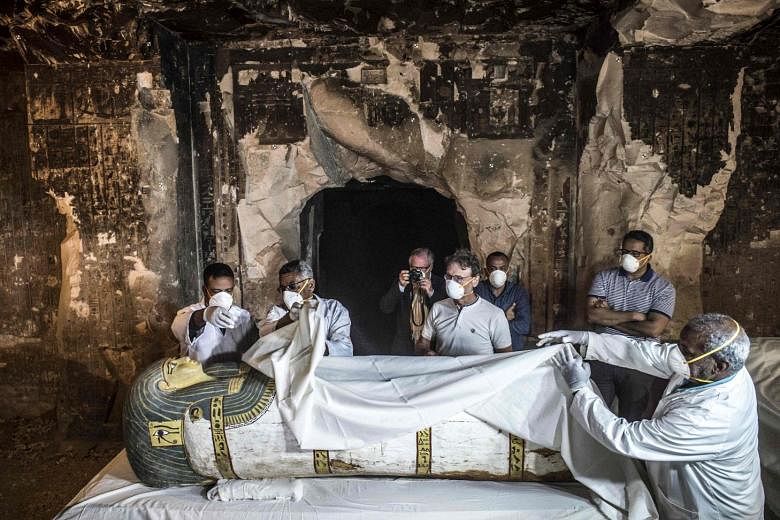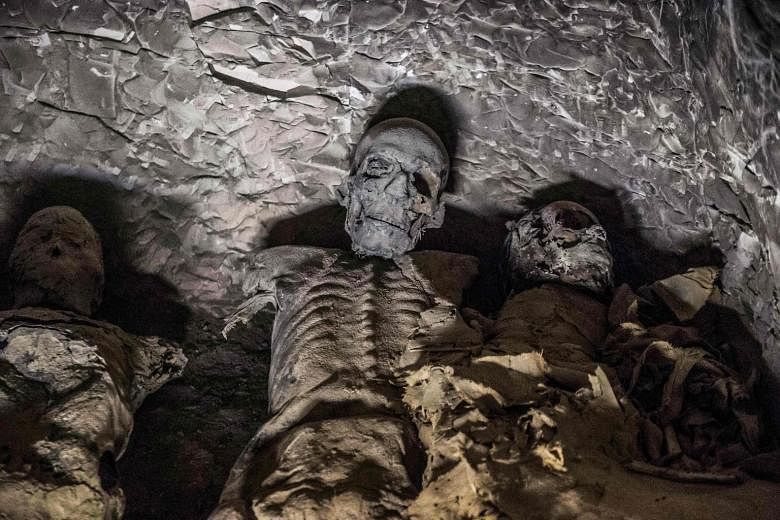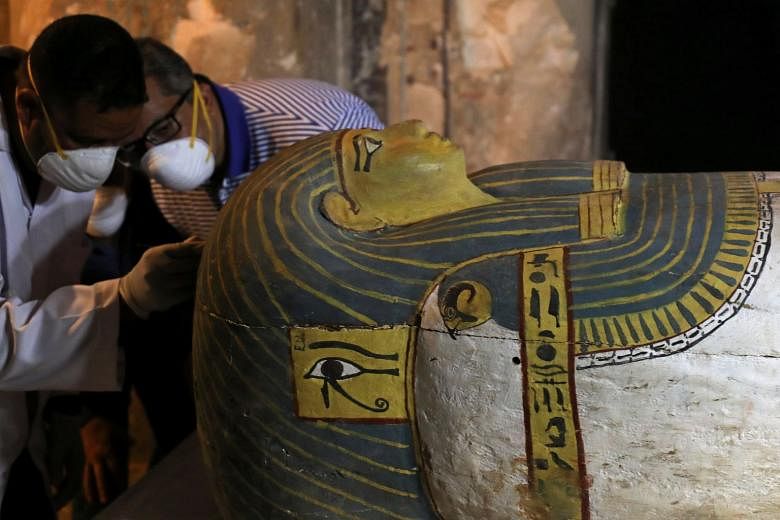LUXOR, Egypt (AFP) - Egypt on Saturday (Nov 24) unveiled an ancient tomb, sarcophagi and funerary artefacts discovered in the Theban necropolis of Al-Assasif in the southern city of Luxor.
In a ceremony in front of the temple of Queen Hatshepsut, Antiquities Minister Khaled al-Anani announced that French and Egyptian archaeologists had discovered "a new tomb... with very nice paintings".
Located between the royal tombs at the Valley of the Queens and the Valley of the Kings, the Al-Assasif necropolis is the burial site of nobles and senior officials close to the pharaohs.
Among the finds in the tomb are sarcophagi, statues and some 1,000 funerary figurines called "Ushabtis" made of wood, faience and clay.
The tomb dates back to the Middle Kingdom, which spanned the 11th and 12th dynasties, and belonged to "Thaw-Irkhet-If", mummification supervisor at the Temple of Mut in Karnak, according to the ministry.
Separately, archaeologists from the French Institute of Eastern Archeology (IFAO) and the University of Strasbourg have discovered two sarcophagi dating back to the 18th dynasty, Anani told a news conference.
One of the two contains the "well-preserved" mummified remains of a woman named Thuya, the antiquities ministry said in a statement.
But ministry spokeswoman Nevine Aref told AFP later that work was still ongoing to definitively identify the name of the mummy.
Egyptian authorities regularly announce archaeological discoveries with great fanfare, although the country is often accused of a lack of scientific rigour and neglect of its antiquities.
Archaeological sites, particularly in Luxor, make Egypt a major draw for foreign tourists.
Hit by the turmoil that enveloped Egypt after the 2011 uprising that ousted longtime president Hosni Mubarak, the tourism sector has picked up this year.




